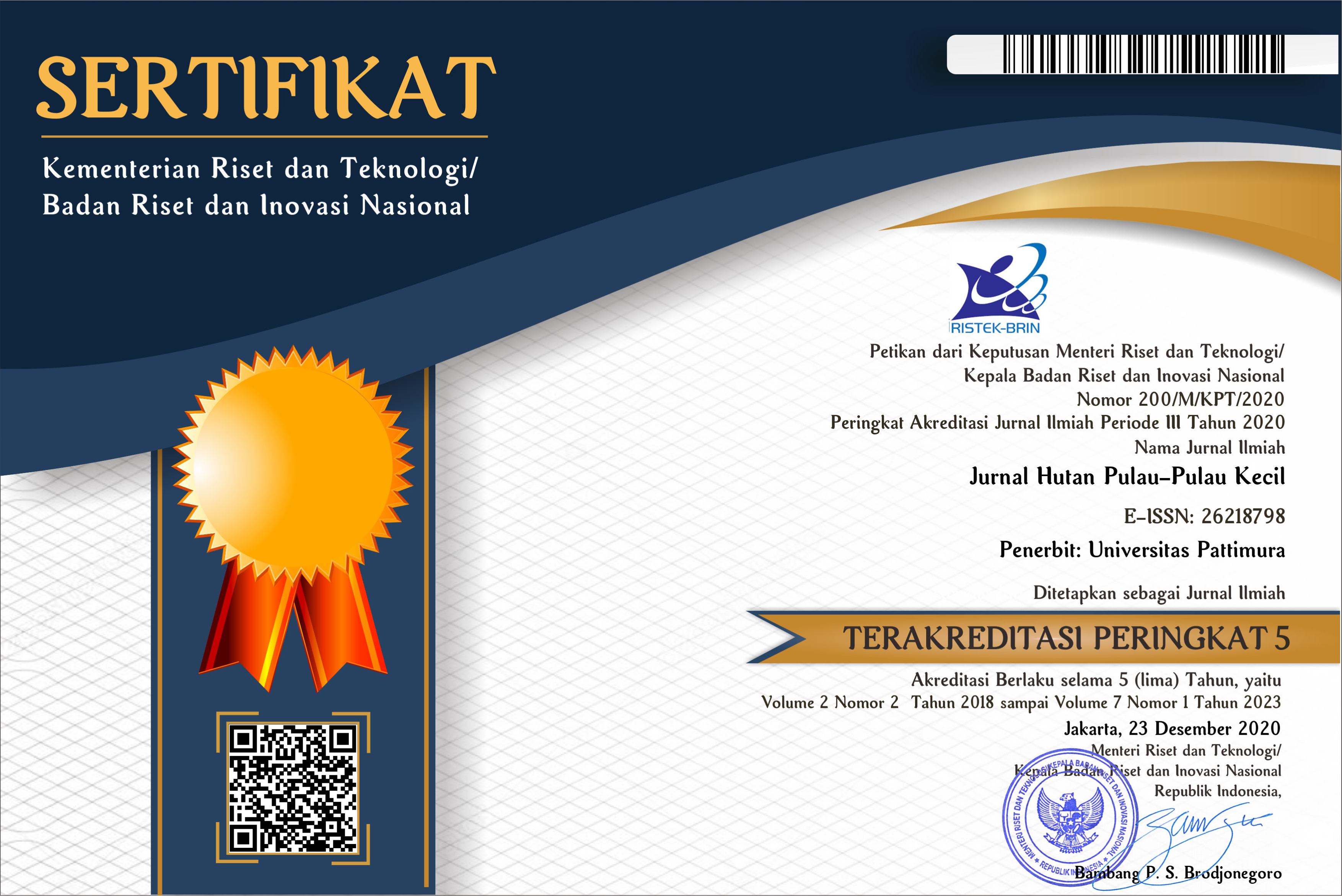SIFAT FISIS DAN MEKANIKA, WETABILITAS DAN EMISI FORMALDEHIDA BAMBU LAMINA YANG DIBUAT DARI BEBERAPA JENIS BAMBU
Abstract
Laminating technology is one of technique to utilize thick pieces of bamboo becoming composite product that might be replace solid wood. Objective laminating technique is to make original size of resources become bigger in term of length, width and thickness. Laminated product was made by binding of two or more pieces plane wood in parallel grain using adhesives and press to increase its strength and quality. Objective of the study was To determine moisture content and specific gravity of laminated bamboo, to determine modulus of elasticity (MOE), modulus of rupture (MOR), compressive strength, shear strength and percentage of rupture of laminated bamboo, To determine wet ability of bamboo, To determine emission of formaldehyde release from laminated bamboo that utilize urea formaldehyde as binding agent, To determine amount of delaminating of laminated bamboo and viscosity of adhesives. Result of the study indicated that preliminary treatment (A), and level of cold press (C) was significant effect to the properties of laminated bamboo, although type of adhesives was not significant effect to the properties as single factor. Interaction factors such as AB, AC and BC was significant effect to the properties of laminated bamboo, although combination factor such as ABC was not significant. Preliminary treatment was significant effect to the specific gravity of laminated bamboo that made of petung, jawa and kuning bamboo; modulus of elasticity (MOE) of laminated bamboo that made of suanggi bamboo; compression strength of laminated bamboo made of petung and suanggi bamboo. Another hand, level of cold press was significant effect to the modulus elasticity (MOE) of laminated bamboo, made of petung bamboo; and percentage of rupture of laminated bamboo made of petung, jawa and suanggi bamboo.
Downloads
References
Bodig, J., 1962. Wettability Related to Gluability of Five Philipines Mahaganies. Forest Product Journal 9 (12) : 451-458.
Brown,H.P., A.J.Panshin dan C.C. Forsaith, 1952. Textbook of wood Technology Vol II. Mc. Graw. Dill Book Company, New York.
Darmono, 2013. Penanaman Bambu. Duta Rimba Vol. IXI (157-158): 50-53 Jakarta.
Gaspersz, V, 1989. Metoda Perancangan Percobaan. Untuk Ilmu-Ilmu Pertanian, Ilmu-Ilmu Teknik dan Biologi. Penerbit ARMICO.Hayangreen, J.G dan J.L. Bowyer, 1996. Hasil Hutan dan Ilmu Kayu, Suatu Pengantar. Terjamahan Gadjah Mada University Press. Yogyakarta.
Hayangreen, J.G dan J.L. Bowyer, 1996. Hasil Hutan dan Ilmu Kayu, Suatu Pengantar. Terjamahan Gadjah Mada University Press. Yogyakarta.
Hyun Jung Ihn., Yeon Heung Chung, Yong Dae Lee and Jae Myeong Jo,. 1981. Eliminating Odor of Formaldehyde Emission From Formaldehyde Adhesive Plywood. The Research Report of The Forest Research Institute, Number 28. Forest Research Institute Office of Forest. Seoul, Korea.
Janssen, J., 1980. The Mechanical Properties of Bamboo Used in Construction. In : Lassard G., and Chounard, A., (Editors). Bamboo Research in Asia : Proceeding of a Workshop Held in Singapore 28-30 May 1980. IDRC. Ottawa. 228 halaman.
Loiwatu, M., 2005. Pengaruh Posisi Radial Kayu Bawang (Dysoxylum sp), Jenis Filler dan Derajat Kelembutannya Terhadap Keteguhan Rekat. Thesis, Universitas Gadjah Mada. Tidak Dipublikasikan.
Manuhua, E., 2005. Assesment Potensi Bambu dan Pemberdayaannya di Pulau Seram. Workshop Bambu, Kerjasama United Nation Industry Development Organization (UNIDO) dengan PEMDA Maluku. (Laporan Hasil Penelitian)
Moody, R.C, 1999. Glue Structural Members in Wood Handbook : Wood as an Engineering Material. Forest Product Laboratory USDA Forest Service. Madison Wisconsin. 463 Halaman.
Munda A., 1989. Pengaruh Penambahan Penangkapan Pada Perakat Urea Formaldehida Terhadap Emisi Formaldehida dan Keteguhan Rekat Kayu Lapis Meranti Merah (Shorea spp). Skripsi Jurusan THH Kehutanan, IPB. (Tidak dipubilasikan).
Prayitno, 1987. Perilaku Tolok Ukur Perekatan Kayu. Duta Rimba XII (73-73) : 27-31.
Prayitno, T.A., 1996. Perekatan Kayu. Bagian Penerbitan Fakultas Kehutanan UGM.
Sushardi, 2001. Sifat Perekatan dan Emisi Formaldehida Empat Jenis Kayu. Tesis. Fakultas Kehutanan Universitas Gadjah Mada (Tidak Dipublikasikan).
Sutigno P., dan dan Masano, 1986. Pengaruh Banyaknya Lapisan Terhadap Sifat Kayu Lamina Meranti. Duta Rimba, Volume. XII (73-73), Edisi Januari-Februari) : 22-29, Jakarta.
The Japan Plywood, 1973. Japanese Agriculture Standard for Common Plywood and Its Commentary. The Japan Plywood Manufactures Association.
Tsoumis, G., 1991. Science and Technology of Wood Structure,Properties, tilization. Von Nostrand Reinhold, New York.
Vick, C.B, 1999. Wood Handbook, Wood as an Engineering Material, Chapter 9 US. Department of Agriculture Forest. Service Forest Product Laboratory, Madiso




